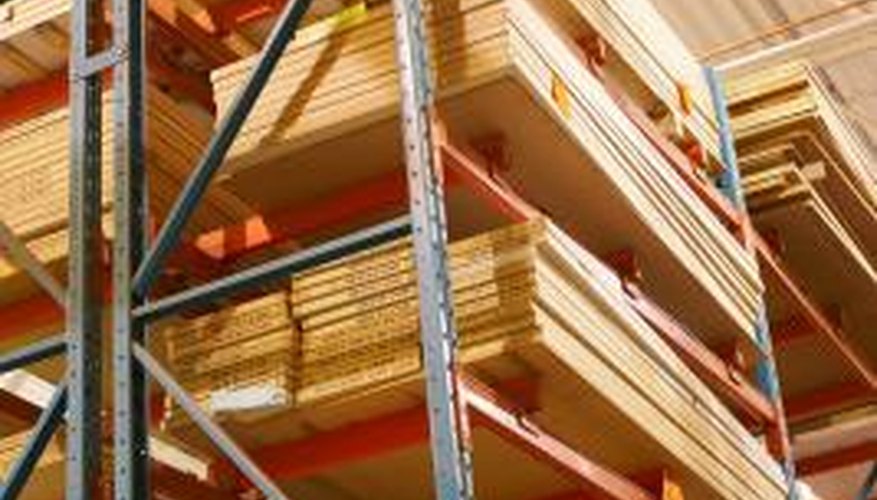Inexpensive and quick to install, plywood siding imitates several traditional siding materials, including tongue and groove siding and lap siding. To reproduce the appearance of solid wood siding, manufacturers route grooves through the plywood's surface. Importantly, if you plan to use a plywood product as exterior cladding, check the material's description to ensure that the layers of the plywood, called plies, are bound with exterior grade plywood glue. Additionally, most exterior plywood siding applications require waterproofing, such as paint, stain or sealant, prior to installation.
Board and Batten Style
Traditional board and batten siding consists of wide planks, called boards, installed side by side across a wall's surface. Siding installers fasten thin planks, called battens, over the seams between the wide planks. To imitate the alternating stripes of board and batten siding, plywood manufactures cut long, straight grooves across the siding's surface. The space between adjacent grooves alternates between wide and narrow to recreate the visual impression of board and batten.
- Traditional board and batten siding consists of wide planks, called boards, installed side by side across a wall's surface.
Tongue and Groove Style
Tongue and groove (T&G) siding consists of a series of interlocked planks. Sawmills cut a channel, called a groove, along one edge of a T&G plank and a slim, centred lip, called a tongue, along the opposite edge. The planks' tongues fit directly into adjacent grooves to create a tight, interlocking seal. As with board and batten style plywood siding, manufacturers cut grooves across the plywood's surface to imitate a T&G pattern. However, the T&G pattern's grooves are evenly spaced across the width of the plywood sheet. A favourite type of plywood siding called T1-11 features evenly spaced grooves that vaguely resemble a T&G pattern.
- Tongue and groove (T&G) siding consists of a series of interlocked planks.
- As with board and batten style plywood siding, manufacturers cut grooves across the plywood's surface to imitate a T&G pattern.
Lap Siding Style
As suggested by its name, lap siding consists of a series of overlapping planks. Also called clap board siding, the top edge of each lap siding plank rests beneath bottom edge of its overlapping plank to create raised edges that easily shed water. Not to be confused with fibre cement lap siding, manufacturers perform special milling across the surface of plywood sheets to recreate the appearance of lap siding.
Plywood Sheet Orientation
Regardless of groove pattern or style, the orientation of plywood siding's grooves alters the siding's appearance. All types of plywood siding sheets are suitable for both vertical and horizontal orientation. Similar to striped clothing, horizontal orientation visually exaggerates a structure's width, and vertical orientation accentuates a structure's height.
